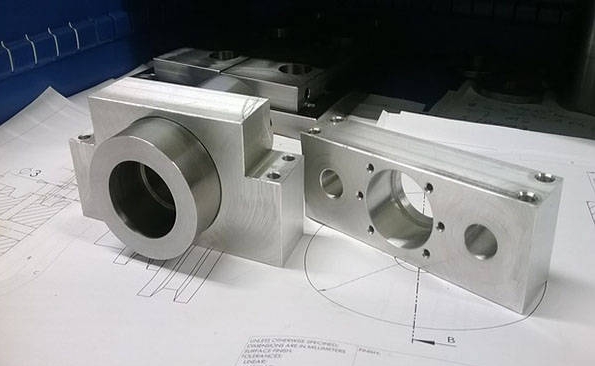Advancements in Aerospace Manufacturing: How Metal Stamping Shapes Lightweight Structural Components+ View more
Advancements in Aerospace Manufacturing: How Metal Stamping Shapes Lightweight Structural Components
+ View more
Date:2023-12-28 20:30
Introduction
In the realm of aerospace manufacturing, metal stamping emerges as a key player in shaping lightweight structural components. This article delves into the significant advancements brought about by metal stamping technology in the aerospace industry. By examining its impact on aircraft fuselage production, wing fabrication, engine component manufacturing, and interior assembly, we uncover how metal stamping is driving innovation and revolutionizing the development of lightweight and high-performance aerospace structures.
1. Aircraft Fuselage Production: Precision Engineering for Strength and Weight Optimization
Metal stamping enables precision engineering in the production of aircraft fuselages, ensuring optimal strength-to-weight ratio. Through advanced stamping techniques, complex curved panels are formed with high dimensional accuracy and structural integrity. Metal-stamped skin panels, frames, and stringers provide the necessary rigidity while reducing overall weight, leading to enhanced fuel efficiency and improved performance. The use of lightweight materials coupled with metal stamping techniques enables the production of aircraft fuselages that can withstand extreme conditions and meet stringent safety standards.
2. Wing Fabrication: Streamlining Aerodynamic Design and Performance
Metal stamping plays a crucial role in the fabrication of wings, optimizing aerodynamic design and performance. With precise stamping processes, wing skins, ribs, and spars are manufactured to meet strict tolerances and exact specifications. Metal-stamped wing components, designed for optimal airflow and reduced drag, enhance lift capabilities and fuel efficiency. The combination of advanced materials and metal stamping techniques allows for the construction of lightweight wings that improve maneuverability, reduce emissions, and increase the range of aerospace vehicles.
3. Engine Component Manufacturing: Enhancing Performance and Efficiency
Metal stamping contributes significantly to the manufacturing of engine components, enhancing performance and efficiency. Through high-speed stamping and precision forming, critical parts such as turbine blades, compressor disks, and combustion chambers are fabricated with intricate geometries and tight tolerances. Metal-stamped engine components offer superior strength, heat resistance, and dimensional stability, enabling engines to operate at higher temperatures and pressures. By improving the efficiency of combustion and airflow, metal stamping helps optimize fuel consumption, reduce emissions, and increase the power output of aerospace engines.
4. Interior Assembly: Lightweight Structures for Passenger Comfort and Safety
Metal stamping techniques are utilized in the assembly of lightweight structures for aircraft interiors, ensuring passenger comfort and safety. Metal-stamped seat frames, overhead bins, and partitions are manufactured with precision and durability, providing structural support while minimizing weight. These components contribute to the overall weight reduction of the aircraft, allowing for increased payload capacity and fuel efficiency. Additionally, metal stamping allows for the integration of features such as reinforcement ribs, mounting brackets, and fastening points, ensuring robust construction and cabin safety.
5. Advanced Manufacturing Techniques: Pushing the Boundaries of Aerospace Innovation
Metal stamping incorporates advanced manufacturing techniques that push the boundaries of innovation in the aerospace industry. Progressive die stamping, CNC machining, and automated quality control systems streamline production processes, ensuring consistent quality and reducing lead times. Furthermore, the adoption of simulation and optimization tools enables engineers to refine designs, identify potential issues, and improve manufacturability. With the integration of additive manufacturing and robotic automation, metal stamping continues to drive advancements in aerospace manufacturing, facilitating complex part production, reducing costs, and expanding design possibilities.
6. Collaboration and Innovation: Shaping the Future of Aerospace Manufacturing
Collaboration among metal stamping experts, aerospace manufacturers, and research institutions drives innovation in aerospace manufacturing. By combining their expertise, these collaborations lead to advancements in stamping techniques, material science, and design optimization. Research and development efforts focus on further reducing weight, improving material properties, and exploring new alloys for enhanced performance. Through ongoing collaboration and innovation, metal stamping continues to shape the future of aerospace manufacturing, enabling the development of lighter, stronger, and more efficient aircraft structures.
Conclusion
Metal stamping technology plays a vital role in advancing aerospace manufacturing, shaping lightweight structural components that are essential for the industry's growth. By enabling precision engineering, streamlining production processes, enhancing performance and efficiency, and supporting passenger comfort and safety, metal stamping revolutionizes the development of high-performance aerospace structures. With its integration of advanced manufacturing techniques and collaboration-driven innovation, metal stamping paves the way for the future of aerospace manufacturing, fueling advancements in lightweight design, improved fuel efficiency, and enhanced overall performance.
Share to:
Recommend wonderful blog posts

